Shrub cucumbers are hybrids that are compact in size and have weak branching. On the short stems of such plants, as a rule, a large number of ovaries are formed, which rapidly form into fruits and ripen just as rapidly. Outwardly, the bushes resemble a flower brush with many fruits inside.
Shrub varieties perfectly suitable for open ground. They are characterized by unpretentiousness, which is of great importance for crops grown in garden plots. In addition, bush hybrids have good immunity, which makes them resistant to various diseases. Self-pollinated varieties of bush cucumbers deserve special attention. This view is more suitable for greenhouses and greenhouses.
Content
- 1 Characteristics of self-pollinated species of bush type cucumbers
- 2 Features of growing self-pollinating varieties of cucumbers
- 3 The best varieties of self-pollinated bush cucumbers for open ground
- 4 What varieties of self-pollinated bush cucumbers are suitable for a greenhouse
- 5 Reviews of gardeners
Characteristics of self-pollinated species of bush type cucumbers
The discovery of self-pollinating species is considered a huge achievement by breeders. The formation of ovaries in such plants does not depend on insects, but occurs on its own. Accordingly, cucumbers give a much larger crop in comparison with species whose pollination process requires the participation of bees.
Self-pollinated varieties have the following distinguishing features:
- Pollination occurs without the help of bees.
- Both the pestle and the stamen are present in the flower, which are pollinated when moisture, such as dew, enters them.
- Universal varieties that bear fruit well both in greenhouse conditions and in open areas.
- Early ripening of fruits.
- High yield.
Subject to all recommendations for growing plants, 1 m² of area occupied by self-pollinated cucumber bushes can produce up to 20 kg of cucumber crop.
Often, self-pollinating species means self-fertile (parthenocarpic) cucumbers. In fact, these are completely different types of plants, a common feature of which is the absence of the need for insects to participate in the formation of ovaries. Parthenocarpic varieties bear fruit without a pollination process. They are also distinguished from other cucumbers by the complete absence of seeds.
Features of growing self-pollinating varieties of cucumbers
Growing self-pollinated bush cucumbers is not difficult. These species are quite unpretentious and require minimal maintenance.
Landing
To accelerate the process of germination, the seeds of cucumbers are soaked in water for 20 hours. Then the swollen grains are laid out on a damp napkin in a warm place with bright diffused light.
Seeds are planted at the end of May. Seedlings - in late April and early May. The distance between the bushes is determined depending on the variety: from 15 to 30 cm. Thickly planted plants are more likely to be affected by diseases and pests.
Watering and feeding
Cucumbers are moisture-loving plants, so you need to water them abundantly and regularly. Water for irrigation should be warm: the temperature conflict of moisture and soil is unacceptable. Overdried plants do not fit well, they lose leaves.From waterlogging, root rot and fungal infections often develop. Therefore, in the issue of watering, the gardener needs to keep a middle ground.
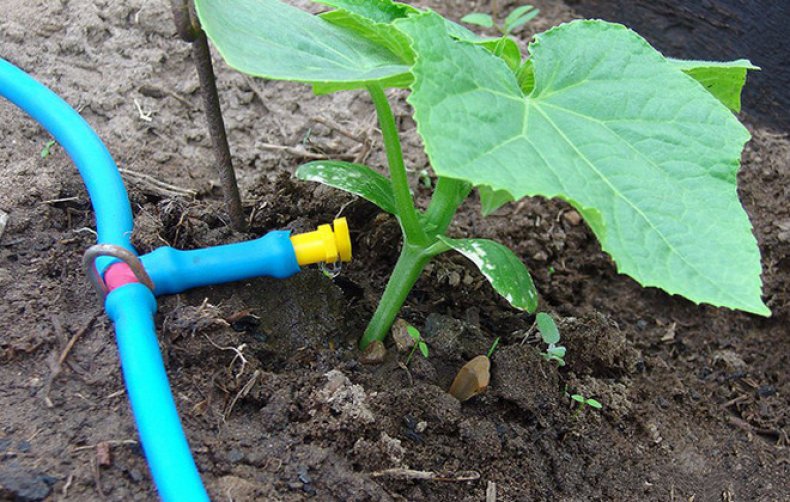
Shrub species develop much faster than long-stemmed cucumbers, so they are fed a little more often. If for long-stemmed plants the frequency of fertilizer application is 3-4 times, then bush hybrids feed 5-6 times per season.
During active growth, it is important to use nitrogen-containing complexes. During flowering and fruiting, plants require fertilizers with a high content of potassium. Mineral fertilizers are recommended to alternate with organic.
Care
Care for bush varieties is less complicated than for their long-stemmed relatives.
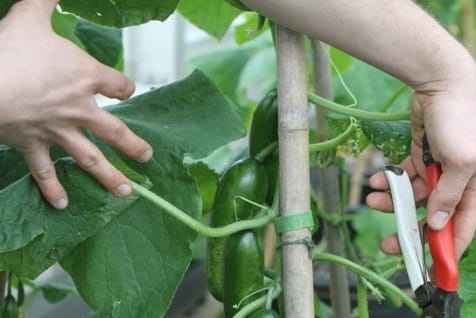
Loosening the soil around the bush is recommended immediately after watering. When performing this action, the grower should be extremely careful: the root system of the plant is located close to the surface of the soil, so it is easy to damage it when loosening.
Weeds interfere with the normal development of plants, blocking them from light, disrupting the gas exchange process and depleting the soil. In addition, they often provoke the development of diseases and infection with harmful insects. Therefore, timely weeding is a must.
The best varieties of self-pollinated bush cucumbers for open ground
Not all self-pollinated plants are suitable for growing on sites. The very best varieties for open soil such hybrids are considered: Patti, April, Korolek, Prestige and Stella.
Patty
Patti is a relatively new hybrid characterized by high productivity. Resistant to cold and disease. Fruiting occurs on the 40th day after planting.
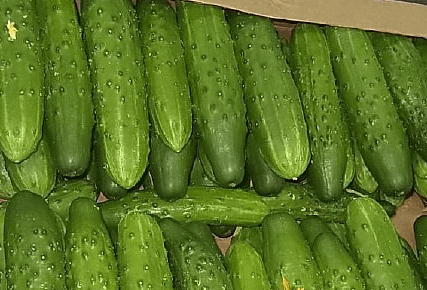
Cucumbers reach 11 cm in length, and weigh from 60 to 90 g. The fruits have a dark green color with barely noticeable light stripes. The surface of the fruit is covered with small tubercles and spikes.
The taste is sweet, bitterness is absent. The fruits are crispy, retain elasticity and crunch even with salting. Cucumbers are suitable for canning, as well as for eating raw.
April
The April variety was bred in Russia. The hybrid is adapted for cultivation in any territory of the federation. Differs in the increased productivity. The growing season takes 1.5 months.
The growth of the fetus stops after it reaches 25 cm and 240 g. After it, it retains its external and taste qualities, without turning into an overgrowth. The surface is hilly, the thorns are light. The main color tone is dark green.
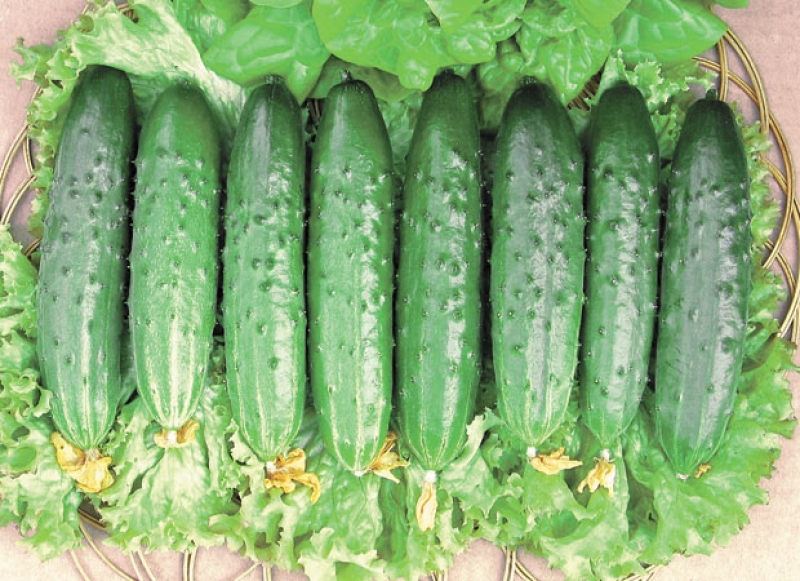
Due to the large size, the fruits are mainly consumed raw. But they do not lose their qualities when canning or pickling.
Korolek
Representatives of the Korolek variety are medium-sized fruits that are distinguished by high commercial quality. They are considered mid-season, as the ripening of the fruits after planting occurs only after 2 months. Korolek is resistant to many dangerous diseases.
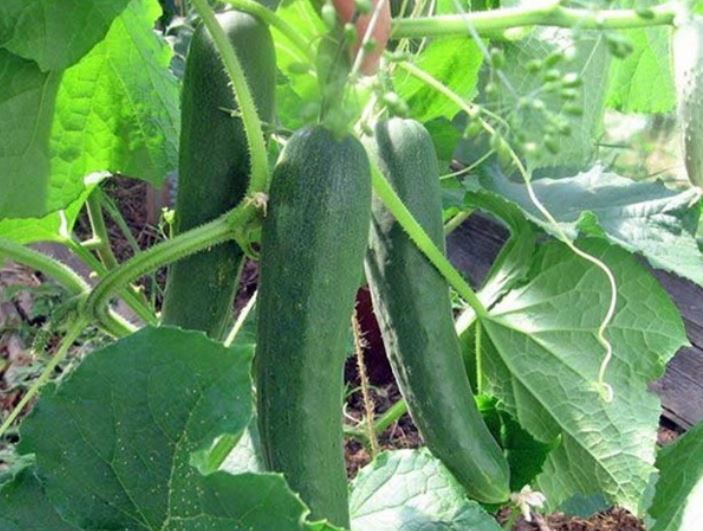
The fruits are large. They grow up to 22 cm in length, weighing up to 200 g. The color is two-color: against a dark green background, light stains, reaching a third of the length of the cucumber, are clearly distinguishable. Rare but large tubercles are present on the surface. Representatives of the Korolek variety are designed for raw food.
Prestige
The Prestige variety is ideal for small beds. The bushes are very compact, but are characterized by high fruiting. With proper care from 1 m², you can collect up to 20 kg of vegetables. Hybrid refers to mid-season species.
The length of the fetus does not exceed 10 cm. The shape is even, the color is uniform. The tuberosity is not continuous. There are light spikes on the tubercles.
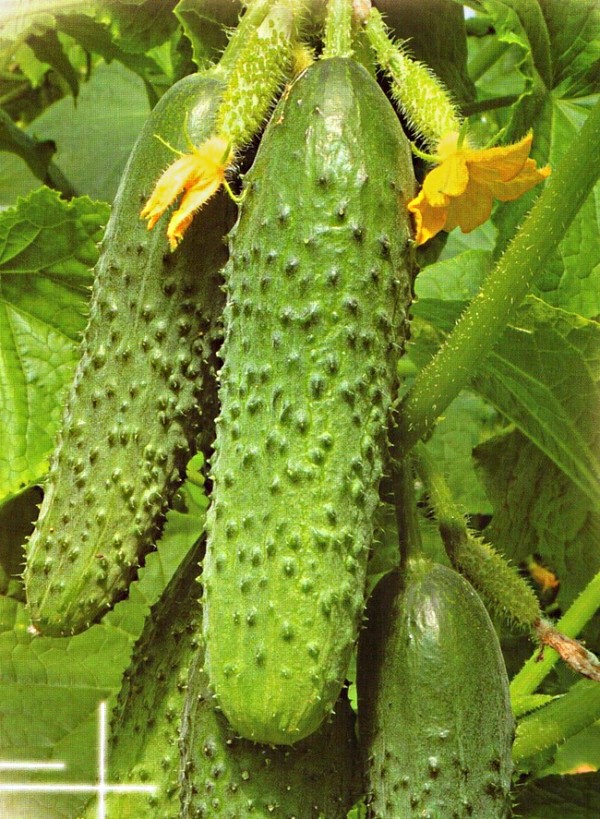
Unripe fruits are actively used for pickling.Due to the pleasant taste, the complete absence of bitterness, the characteristic cucumber crunch that persists even after heat treatment, and the versatility of use, the Prestige hybrid is called the king of cucumbers.
Stella
Variety Stella is characterized by vitality, good productivity. With proper care, up to 8 ovaries are formed on the 1st node. Stella refers to mid-height hybrids, since the fruits ripen only at the 2nd month.
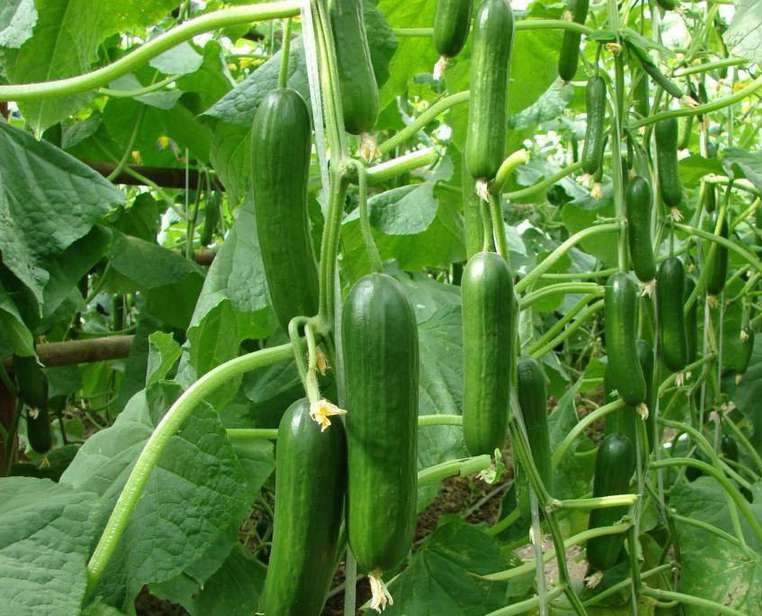
Large soft green fruits with weakly expressed pimples. Spikes are missing. A yellow flower is retained at the tip. Taste - excellent, flesh - juicy, crispy.
Large sizes of fruits suggest the use of cucumbers for the preparation of salads and other dishes that are consumed fresh. However, some housewives manage to salt the 23-centimeter fruits of the Stella variety.
What varieties of self-pollinated bush cucumbers are suitable for a greenhouse
For greenhouses, compact plants with high productivity and the possibility of pollination without the help of bees are chosen. Self-pollinated hybrid hybrids are ideal for this.
Most suitable varieties for growing in a greenhouse such hybrids are considered:
- Zozulya. Differs in unpretentiousness in leaving. Seeds are planted in May, but they begin to bear fruit already in early summer. Fruits grow up to 15 cm. Mostly fresh consumption.
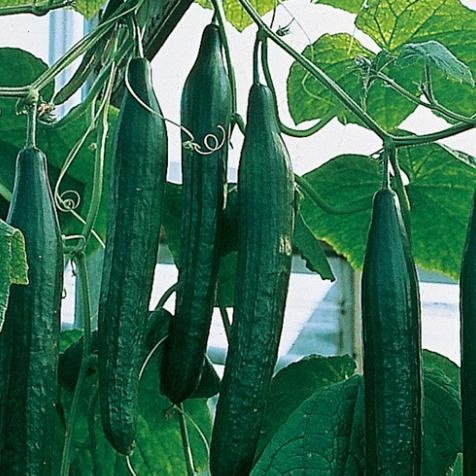
Zozulya - Courage. Early ripe cucumbers, which are considered universal. Due to the small size and high taste, they are used both for the preparation of salads and for canning. With the right approach to growing plants, from one bush you can collect up to 9 kg of vegetables.
- Ant. An early ripe hybrid of universal purpose. Fruits reach 9-12 cm in length and 100 g in their mass. The pulp is crispy, dense, without voids. It has a sweet taste. Bitterness is not felt.
- Brownie. Late cucumbers that are harvested until mid-autumn. The growing season is 60 days. Due to its small size (6-7 cm at 80 g weight), the fruits of the Domovenok variety are ideal suitable for salting or canning.
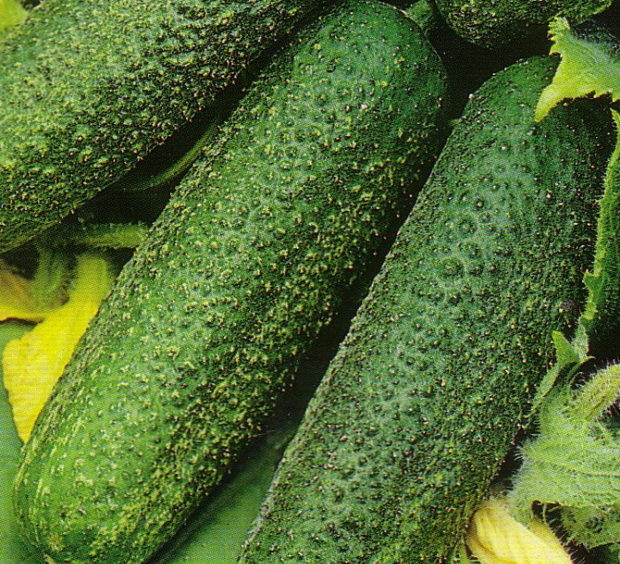
Brownie - Nezhinsky. Hybrid late ripening, characterized by high fruiting and resistance. Unlike most bush varieties, Nezhinsky hybrid grows a powerful 2-meter bush with very branched shoots. Fruits reach 10 cm.
- Tom Thumb. Early ripe hybrid, the fruits of which ripen already on the 35th day after planting. Plants are highly resistant to cold. Small fruits not exceeding 8 cm are perfect for pickling and pickling.
- Fortress. High-yielding salad plant variety, which refers to mid-season species. Bushes bear abundantly. Cucumbers have a pleasant taste, but during heat treatment they lose their dignity.
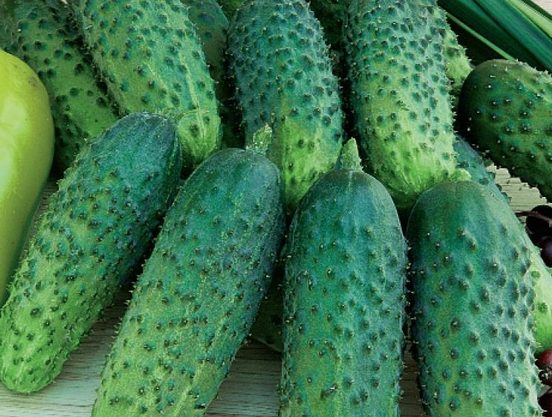
Fortress
Greenhouse varieties are not intended for planting in open ground. Growing them in an unprotected space leads to a decrease in yield and an increase in the ripening time of fruits.
Reviews of gardeners
Gardeners willingly share their experience in growing self-pollinated hybrid hybrids:
Andrey, 53 years old: “We have been growing this species for several years. It is perfect for a small garden. A huge plus is the absence of the need for trellis construction and a simplified care scheme. The bushes grow compactly, without taking up much space, have a decorative appearance. Fruits ripen on the 50th day of planting. Harvest is removed almost simultaneously. We determine cucumbers for pickling and pickling. In winter, we take strong, crisp and very tasty cucumbers from the can. ”
Larisa, 33 years old: “Planted several varieties at once. Very happy with the result. The sizes are small, the whips are short. Such cucumbers are convenient to collect and there is no need to tie them up. Zelentsy does not transform into overgrown, but remain small and green, for a long time keep freshness. The yield is average, but the fruits are sweet, fragrant and juicy. "
Pavel, 47 years old: “I consider Shrub species unsuitable for our climate.In the conditions of hot summer leaves quickly turn yellow and dry. It is also worth noting that the bushes bear less than a month. Appearance and taste are ordinary, many fruits were bitter at the base. Productivity is low. I do not consider it appropriate to grow this variety in the future. "
Self-pollinating bush hybrids are a new generation of cucumbers, for the successful formation of the ovaries of which the help of insects is not required. Such hybrids are characterized by high fruiting and unpretentiousness.




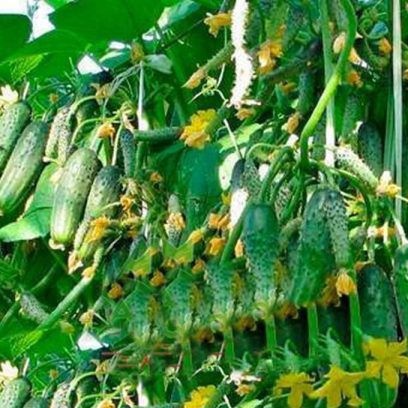
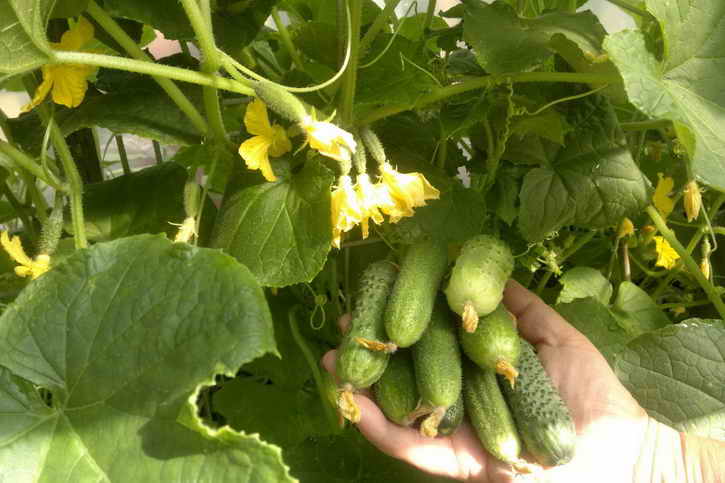
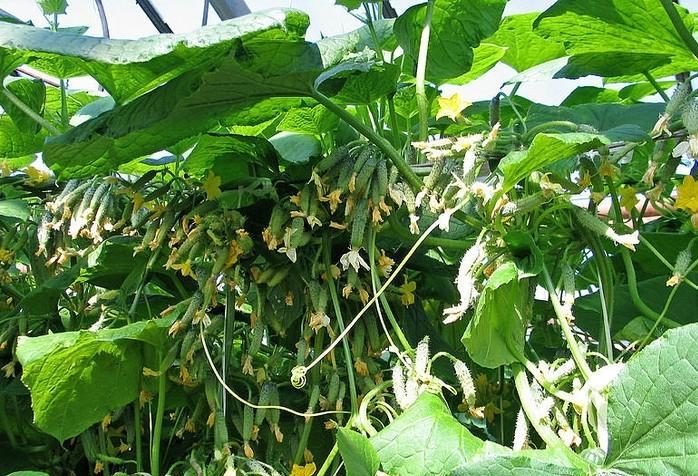
 Armenian cucumber with melon flavor: description and characteristics, reviews
Armenian cucumber with melon flavor: description and characteristics, reviews Do-it-yourself vertical beds for cucumbers: schemes, photos
Do-it-yourself vertical beds for cucumbers: schemes, photos Hollow cucumbers: reasons for the appearance of hollow, what to do
Hollow cucumbers: reasons for the appearance of hollow, what to do Which manure is best for cucumbers: application, how to breed
Which manure is best for cucumbers: application, how to breed